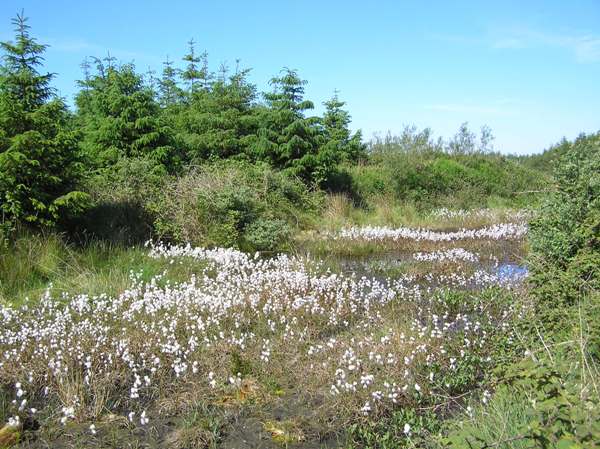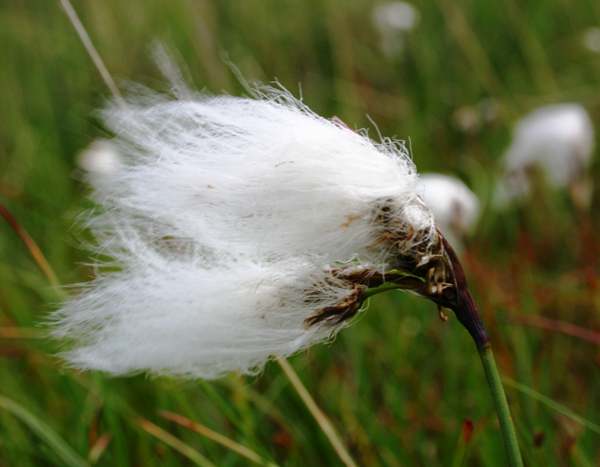Eriophorum angustifolium - Common Cottongrass
Phylum: Magnoliophyta - Class: Equisetopsida - Order: Poales - Family: Cyperaceae

Above: Common Cottongrass on boggy moorland, West Wales
On marshy upland bogs in Wales you will see fluffy heads of Cotton Grass throughout the summer and autumn months.
Description
Individual stems grow from underground rhizomes and they each bear several flowerheads, unlike other species in this genus, such as Eriophorum vaginatum. which has just one flower per stem.
Distribution
This plant is common on acid boggy ground throughout Britain and Ireland. In Wales, Common Cottongrass is plentiful in Snowdonia and on Cors Caron, the great red bog at Tregaron in the upper reaches of the River Teifi.
It is the fruits that make Common Cottongrass so visible, they are dark brown and have white cotton-like hairs resembling cotton wool. The flowers appear in April to May and are followed by the fruits in June and July.

The fruits are dark brown with cotton-like hairs which are most visible in June.
The plants shown on this page were photographed in West Wales in June.
Sue Parker's latest ebook is a revised and enlarged second edition of the acclaimed Wildflowers in the Algarve - an introductory guide. Full details here...
Buy it for just £3.95 on Amazon...
Please Help Us: If you have found this information interesting and useful, please consider helping to keep First Nature online by making a small donation towards the web hosting and internet costs.
Any donations over and above the essential running costs will help support the conservation work of Plantlife, the Rivers Trust and charitable botanic gardens - as do author royalties and publisher proceeds from books by Pat and Sue.



